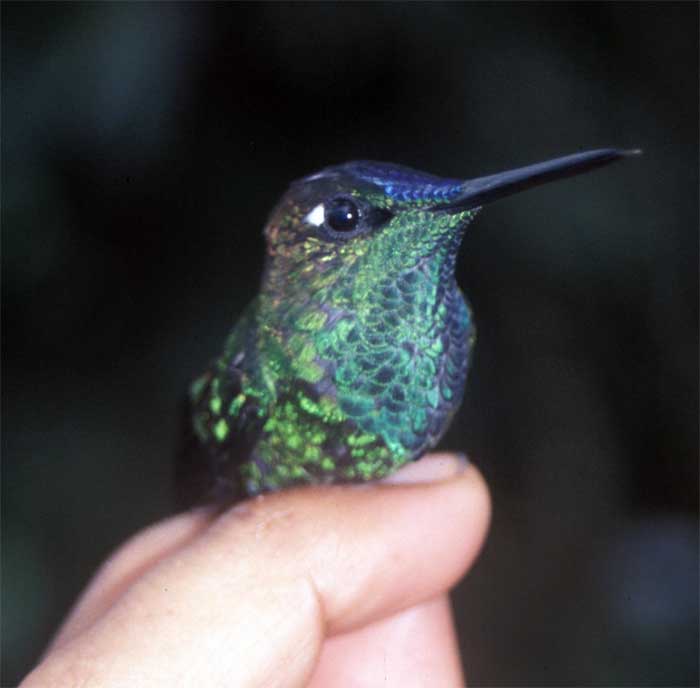Heliodoxa leadbeateri (*) Cladus: Eukaryota Name Heliodoxa leadbeateri (Bourcier, 1843) References * Rev.Zool. 6 p.102
The Violet-fronted Brilliant (Heliodoxa leadbeateri) is a species of hummingbird in the Trochilidae family. It is found in Bolivia, Colombia, Ecuador, Peru, and Venezuela. Its natural habitat is subtropical or tropical moist montanes. Source: Wikipedia, Wikispecies: All text is available under the terms of the GNU Free Documentation License |
|

